by Ali Minai
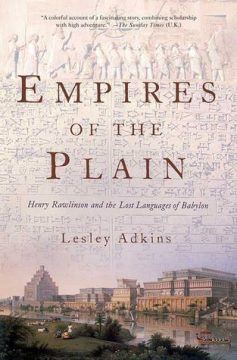 I came to Empires of the Plain: Henry Rawlinson and the Lost Languages of Babylon by Lesley Adkins (Thomas Dunne Books, 2003) because I was looking to read about Henry Rawlinson – someone I had wondered about and admired for a long time. Copying the immense and inaccessible trilingual cuneiform inscription of Bisitun, and then working to decipher not one but three ancient languages from virtually nothing were feats fit more for legend and story than reality. But Rawlinson was real and, if anything, even more remarkable than my limited knowledge of his accomplishments had suggested. Nominally, the book is a biography of Rawlinson, with a strong focus on the period he spent in Iran (or Persia, as it was called then) and Iraq (then under Ottoman rule). But, in fact, it is the story of a Great Adventure that completely revolutionized our knowledge of human history in ways that is almost beyond imagination for us in the 21st century. And it is told by the author with great skill and verve in this gripping book. This article too is not intended as a book review, but rather as a general reflection on archaeology and how it has changed the world, albeit seen through the work of Rawlinson and his peers.
I came to Empires of the Plain: Henry Rawlinson and the Lost Languages of Babylon by Lesley Adkins (Thomas Dunne Books, 2003) because I was looking to read about Henry Rawlinson – someone I had wondered about and admired for a long time. Copying the immense and inaccessible trilingual cuneiform inscription of Bisitun, and then working to decipher not one but three ancient languages from virtually nothing were feats fit more for legend and story than reality. But Rawlinson was real and, if anything, even more remarkable than my limited knowledge of his accomplishments had suggested. Nominally, the book is a biography of Rawlinson, with a strong focus on the period he spent in Iran (or Persia, as it was called then) and Iraq (then under Ottoman rule). But, in fact, it is the story of a Great Adventure that completely revolutionized our knowledge of human history in ways that is almost beyond imagination for us in the 21st century. And it is told by the author with great skill and verve in this gripping book. This article too is not intended as a book review, but rather as a general reflection on archaeology and how it has changed the world, albeit seen through the work of Rawlinson and his peers.
There is certainly something to the trope that our vast knowledge of the world has taken away some of its magic. No longer being able to say “Here be dragons” has, in effect, killed off the last dragons, and left us to look for them in pages of fantasy or Game of Thrones. And what is true of geography is also true of history, though in a far less complete way. There are still plenty of unvisited places in time past, and teasing out information about those places remains one of the most exciting adventures for the human intellect. In the list of such quests, the one by Henry Rawlinson and his peers was surely one of the greatest.
Imagine the state of historical knowledge in the early 16th century. Christians, Jews, Muslims and Hindus – and others who shared their lands – derived most of their knowledge of ancient history from scripture and tradition. Time itself was uncertain. Some – using Biblical calculations – believed that the world was 6,000 years old. Others clung to stories of vanished civilizations of indeterminate antiquity, or put their faith in cosmic philosophies of ages past, present, and future. The Chinese, as one of the most culturally continuous civilizations in the world, had perhaps the longest tradition of true historiography, but even that only went back no more than 4,000 years or so, and dealt only with Eastern Asia. For the West – and for much of the Muslim world, which ultimately derived its intellectual capital from Greek sources – concrete history went back to Thucydides and Xenophon and then to Herodotus.
Cyrus, Xerxes, Themistocles, and (a bit later) Alexander were, in a real sense, the first concrete figures of history in the Western world. The Trojan War was considered purely a work of fiction, and even Alexander was almost as much a mythical figure as a real one. Jericho, Babylon, Nineveh, Ur, Assyria, Akkad, and other places were known from the Old Testament, but no one knew how real or how old – or even where – they truly were. There were also figures from scripture – Sennacherib, Nebuchadnezzar, Pharaoh, Jesus, Moses, Joseph, Abraham, Noah, Adam and Eve, and many others – but they were figures of faith with no evidence beyond the sacred texts. The same was true of the great figures of India, some of whom were seen as divine rather than human and were reported in ancient scripture, which was also regarded as history. Some monuments of great antiquity were known – the Great Wall of China, the Pyramids (though partly buried in sand), Stonehenge – but with no concrete notion of their dates and only cursory interest in them, mainly as objects of curiosity rather than study. The cities of Mesopotamia and the Indus Valley were just mounds of dirt. No one had even imagined sites like Göbekli Tepe in Turkey or the Hypogeum in Malta. Above all, understanding of how human civilization first arose was bound up completely in sacred origin stories rather than hard fact.
The situation was not much different 300 years later in 1827 when 17-year old Henry Rawlinson left England for India as a very junior cadet in the East India Company. Though he had chosen not to pursue a degree at Oxford or Cambridge, Rawlinson had the upper middle-class English schoolboy’s solid grounding in Latin and Greek, and was already taking serious interest in learning Persian and Hindustani (Urdu) in preparation for what he planned to make a brilliant career. A few weeks after arriving in Bombay, he got into trouble. After a night of somewhat excessive drinking, he and some other friends went around uprooting tents in their camp. For a while, it was touch and go on a court martial and Rawlinson, already homesick and feeling unappreciated, wrote in his diary of his plans to run away to Persia and enter the service of the king there, making this portentous declaration: “I cannot bear the idea of creeping unknown through the world.” He spent the rest of his life making sure that he did not.
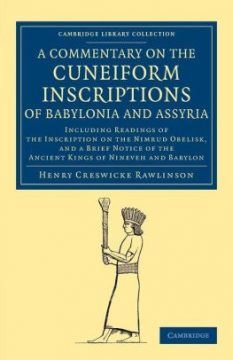 Rawlinson did soon get out of India and did end up at the court of the Persian King, albeit as a representative of the Company. His involvement with the archaeology of Persia began even as he took time visit the ancient ruins of Persepolis on his way from the landing port of Bushehr to Tehran. That initiated a remarkable period in which he became the most reliable agent for the King of Persia among the Kurds of Northwestern Iran, often helping recruit soldiers from there to serve in the King’s wars. Fortunately for him, this was also a region rich in ancient sites, and thus began Rawlinson’s lifelong passion for cuneiform – the mysterious script of wedge-shaped characters that was, in fact, the basis of communication from Persia to Egypt for more than 2,000 years. Of course, no one knew that at the time, since no one could read the script. It was known only from a few monumental sites in Iran that were reliably associated with the Achaemenid dynasty established by Cyrus the Great around 550 BCE, and – as it turned out – the work mainly of the fourth Achaemenid emperor, Darius the Great. The most remarkable of these sites was the mountain called Bisitun (or Behistun) – an awe-inspiring geological formation that juts out 1,700 feet from the plain, and is associated with the legend of Shirin and Farhad. More than 200 feet up the almost sheer cliff face is a very large, multi-panel cuneiform inscription along with a giant carving of Darius receiving submission from vanquished foes and standing with his foot on the back of the pretender he had defeated to gain the throne. The monument, carved around 520 BCE, is 25 feet high and 70 feet wide. As with many other inscriptions from that time, this one is in three languages – all using different versions of the cuneiform script – with more than a thousand lines of writing in all. Rawlinson’s first great achievement – and one that brought him lasting fame – was to copy a large part of the inscription at extreme personal peril. It helped that, in addition to being an intellectual genius, he was also a remarkable natural athlete and mountaineer. That almost unique combination of mind and body was at the core of everything he was to achieve over his remarkable career in extremely inhospitable places, rife with danger, calamity, and the threat of illness. The book provides graphic descriptions of repeated bouts of malaria, engagements with militant tribesmen, and delicate dealings with suspicious administrators that were part of Rawlinson’s experience from the very inception of his work. By 1836 when he made his first copies at Bisitun, he had recruited and trained two tribal regiments for the Shah, and was already a master at dealing with complex political situations. He was 26 years old!
Rawlinson did soon get out of India and did end up at the court of the Persian King, albeit as a representative of the Company. His involvement with the archaeology of Persia began even as he took time visit the ancient ruins of Persepolis on his way from the landing port of Bushehr to Tehran. That initiated a remarkable period in which he became the most reliable agent for the King of Persia among the Kurds of Northwestern Iran, often helping recruit soldiers from there to serve in the King’s wars. Fortunately for him, this was also a region rich in ancient sites, and thus began Rawlinson’s lifelong passion for cuneiform – the mysterious script of wedge-shaped characters that was, in fact, the basis of communication from Persia to Egypt for more than 2,000 years. Of course, no one knew that at the time, since no one could read the script. It was known only from a few monumental sites in Iran that were reliably associated with the Achaemenid dynasty established by Cyrus the Great around 550 BCE, and – as it turned out – the work mainly of the fourth Achaemenid emperor, Darius the Great. The most remarkable of these sites was the mountain called Bisitun (or Behistun) – an awe-inspiring geological formation that juts out 1,700 feet from the plain, and is associated with the legend of Shirin and Farhad. More than 200 feet up the almost sheer cliff face is a very large, multi-panel cuneiform inscription along with a giant carving of Darius receiving submission from vanquished foes and standing with his foot on the back of the pretender he had defeated to gain the throne. The monument, carved around 520 BCE, is 25 feet high and 70 feet wide. As with many other inscriptions from that time, this one is in three languages – all using different versions of the cuneiform script – with more than a thousand lines of writing in all. Rawlinson’s first great achievement – and one that brought him lasting fame – was to copy a large part of the inscription at extreme personal peril. It helped that, in addition to being an intellectual genius, he was also a remarkable natural athlete and mountaineer. That almost unique combination of mind and body was at the core of everything he was to achieve over his remarkable career in extremely inhospitable places, rife with danger, calamity, and the threat of illness. The book provides graphic descriptions of repeated bouts of malaria, engagements with militant tribesmen, and delicate dealings with suspicious administrators that were part of Rawlinson’s experience from the very inception of his work. By 1836 when he made his first copies at Bisitun, he had recruited and trained two tribal regiments for the Shah, and was already a master at dealing with complex political situations. He was 26 years old!
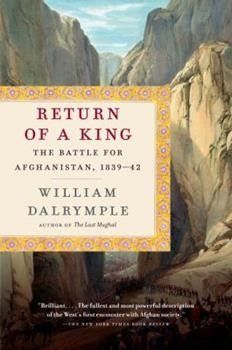 In characteristic fashion, Rawlinson started trying to decipher the scripts even as he was copying them. He realized quickly that one of them was much simpler than the others, and guessed correctly that it was likely to be Old Persian – the native language of Darius. The other two were Elamite and Babylonian, but that too was not known then. Through a process that can only be called a tour de force of logical reasoning, brilliant guessing, and sheer superhuman labor, Rawlinson was able to identify the proper names in the Old Persian inscription, and then, calling upon his knowledge of Persian and ancient Persian history (mainly from Greek sources), he began to assign phonetic value to the symbols in the names. These then enabled him to read other words, and so began a labor of love that would consume several decades of his life. And, oh yes, in the interim, he was sent by the East India Company to Kandahar to take part in the disastrous First Anglo-Afghan War, when the British foolishly invaded Afghanistan to install Shah Shuja on the throne. Characteristically, Rawlinson was one of only two or three senior English officers to perceive the stupidity of the whole enterprise immediately, and to speak out loudly about it. In the event, he was proven right, and – more importantly – was able to get out of Afghanistan unscathed, unlike too many others in the Company’s army. In 1843 – aged only 33 – he was sent as the Company’s Resident to Baghdad, thus beginning the next stage of his career. He would return to Bisitun again in 1846 to copy the rest of the inscription there. By then, he was well on his way to deciphering not only the script but also the language of the Old Persian inscription, and was making good progress on the Babylonian script, though the language remained a mystery.
In characteristic fashion, Rawlinson started trying to decipher the scripts even as he was copying them. He realized quickly that one of them was much simpler than the others, and guessed correctly that it was likely to be Old Persian – the native language of Darius. The other two were Elamite and Babylonian, but that too was not known then. Through a process that can only be called a tour de force of logical reasoning, brilliant guessing, and sheer superhuman labor, Rawlinson was able to identify the proper names in the Old Persian inscription, and then, calling upon his knowledge of Persian and ancient Persian history (mainly from Greek sources), he began to assign phonetic value to the symbols in the names. These then enabled him to read other words, and so began a labor of love that would consume several decades of his life. And, oh yes, in the interim, he was sent by the East India Company to Kandahar to take part in the disastrous First Anglo-Afghan War, when the British foolishly invaded Afghanistan to install Shah Shuja on the throne. Characteristically, Rawlinson was one of only two or three senior English officers to perceive the stupidity of the whole enterprise immediately, and to speak out loudly about it. In the event, he was proven right, and – more importantly – was able to get out of Afghanistan unscathed, unlike too many others in the Company’s army. In 1843 – aged only 33 – he was sent as the Company’s Resident to Baghdad, thus beginning the next stage of his career. He would return to Bisitun again in 1846 to copy the rest of the inscription there. By then, he was well on his way to deciphering not only the script but also the language of the Old Persian inscription, and was making good progress on the Babylonian script, though the language remained a mystery.
At this point, the book introduces several other individuals who became central to the archaeological adventure at hand, but two in particular emerge as leading characters. One is Austen Layard, a self-taught archaeologist who, heading to a planned career in Ceylon (Sri Lanka), abandoned his plans upon reaching Iraq, and spent the next twenty years making some of the greatest archaeological discoveries in human history – including the first systematic excavations of Nineveh, Nimrud, and Assur. He found these sites as mounds of sand and debris, and excavated from them an endless series of palaces, libraries, monumental statues, and wall carvings – thus transforming our entire understanding of human history, and establishing the reality of places that until then were merely the stuff of myth and legend. Interestingly, though Layard – based in Mosul – communicated and collaborated with Rawlinson in Baghdad, the two did not meet for a long time, and Rawlinson always remained much more interested in inscriptions than in sculptures and buildings.
The other great figure in the story is Edward Hincks – a grouchy Irish clergyman, living far from the center of action on a meagre income, but with a remarkable ability to decipher unknown scripts and languages. Relying on copies and prints found in publications or shared by his correspondents in London, Hincks was able not only to replicate most of Rawlinson’s decipherings independently but, in some cases, to get ahead of them. The two would become bitter rivals in the race to get credit – a contest in which the soon to be Sir Henry Rawlinson, dashing world figure, literary giant, great diplomat, accomplished soldier, darling of the London elite, feted member of the Royal Asiatic Society, guest of the Prince Consort and the Prime Minister, had a distinct advantage over the poor Irish cleric whose most extensive travel was a couple of visits to London and who published most of his work in obscure Irish journals.
The rest, one might say, is history. Once Rawlinson returned to England, he settled down – except for a brief appointment as envoy to Persia – married, had children, became a baronet, and died in 1895. Layard too acquired significant celebrity, was knighted, and died in 1894. By then, Hincks, eighteen years older than Rawlinson, was long dead, to be remembered mostly in the annals of archaeology. The path these remarkable men had begun to chart soon opened up vast horizons of history and revolutionized humanity’s conception of itself.
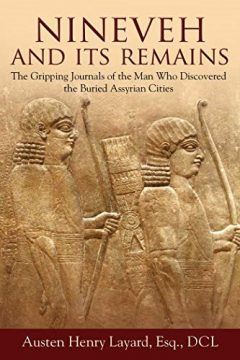 With all the heroic excavations of lost cities and erudite deciphering of lost languages, this story also has a darker side. Rawlinson, Layard, and their peers did not just dig up great palaces and priceless artifacts; they also carted them away to Europe in what was surely one of the greatest acts of cultural looting and vandalism in history. Though the book does not dwell too much on this, it does mention shipment after shipment of giant statues, wall engravings, tablets, obelisks, etc., being packed up and sent off to England, France, and Germany – often with the active collusion of Ottoman and Iranian authorities. Among other things, this often involved doing deliberate damage to the artifacts themselves. For example, on page 238, we read:
With all the heroic excavations of lost cities and erudite deciphering of lost languages, this story also has a darker side. Rawlinson, Layard, and their peers did not just dig up great palaces and priceless artifacts; they also carted them away to Europe in what was surely one of the greatest acts of cultural looting and vandalism in history. Though the book does not dwell too much on this, it does mention shipment after shipment of giant statues, wall engravings, tablets, obelisks, etc., being packed up and sent off to England, France, and Germany – often with the active collusion of Ottoman and Iranian authorities. Among other things, this often involved doing deliberate damage to the artifacts themselves. For example, on page 238, we read:
“…. Layard had returned from Qalah Shergat to Nimrud. He decided to send a colossal bull and a similar lion to England, choosing two smaller examples from the thirteen pairs and several fragments that had now been discovered. He had a sturdy cart made, obtaining a pair of iron axles that had been used by [French archaeologist Paul Emile] Botta at Khorsabad, and in order to diminish the weight of each sculpture, Layard decided to cut away as much as possible from the side that stood against the wall, which was never intended to be seen, rather than saw them into pieces as Botta had done.”
Later (on page 259), we read that Layard too had other sculptures cut into pieces for shipping to England, was criticized for it at home, and received sympathetic words from Rawlinson, who wrote to him: “I certainly do think you have been treated shamefully – it makes one almost blush for one’s country – how different would it have been if you [had] been either a Frenchman or an American.”
Indeed, the French were much more destructive and careless, and the biggest shipment of priceless artifacts sent to France from Mesopotamia simply sank into the Tigris when the giant raft carrying it capsized (pp. 326-7). In the end, much that had lain buried for millennia was discovered, but a lot of it was exiled to foreign lands for visitors to gawk at in the British Museum or the Louvre.
An argument can be made that it was a different time, people had different attitudes, and that the artifacts, once discovered, were much safer in Europe than in their native lands. The latter fear has been justified somewhat by what has happened in recent times, with the blowing up of priceless treasures by the Taliban and ISIS, and the neglect of others by some (though not all) the states that have followed colonial rule in the region. Still, the “finders keepers” logic of the 19th century archaeological enterprise has the inescapable stench of paternalistic colonialism associated with it.
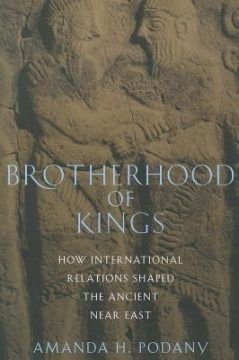 Layard and others who worked with him or followed him made several great discoveries in Mesopotamia, but a few deserve special mention. The first was the finding of various obelisks, large prisms, cylinders, and tablets with extensive inscriptions that enabled Rawlinson, Hincks, and other scholars to start reading out the history of ancient Mesopotamia, including mentions of figures from the Bible, ancient stories such as the Epic of Gilgamesh, and the Code of Hammurabi. The second was the discovery in several places of repositories or libraries containing thousands upon thousands of small, inscribed clay tablets that would ultimately fill in a compelling picture of commerce, administration, and diplomacy across all of the Middle East and the Mediterranean. Then there was the discovery – late in Rawlinson’s time in Iraq – of the “mother civilization” of Mesopotamia – Sumer. Even more significant was the discovery that cuneiform was first used – and presumably invented – by Sumerians, and that their language was not a Semitic or Indo-European language, implying that they were people from some other source. Together, all these discoveries began to dissolve the established Biblical narrative of the birth of civilization. The Sumerians, not the descendants of Adam and Eve, were the first civilization and the inventors of writing. Babylon with its famous tower – still not definitively found – was, at best, a late arrival on the scene, not the mother city of humanity. And the Epic of Gilgamesh recounted the story of the Great Flood long before the chronology associated with Noah – and with no mention of that patriarch.
Layard and others who worked with him or followed him made several great discoveries in Mesopotamia, but a few deserve special mention. The first was the finding of various obelisks, large prisms, cylinders, and tablets with extensive inscriptions that enabled Rawlinson, Hincks, and other scholars to start reading out the history of ancient Mesopotamia, including mentions of figures from the Bible, ancient stories such as the Epic of Gilgamesh, and the Code of Hammurabi. The second was the discovery in several places of repositories or libraries containing thousands upon thousands of small, inscribed clay tablets that would ultimately fill in a compelling picture of commerce, administration, and diplomacy across all of the Middle East and the Mediterranean. Then there was the discovery – late in Rawlinson’s time in Iraq – of the “mother civilization” of Mesopotamia – Sumer. Even more significant was the discovery that cuneiform was first used – and presumably invented – by Sumerians, and that their language was not a Semitic or Indo-European language, implying that they were people from some other source. Together, all these discoveries began to dissolve the established Biblical narrative of the birth of civilization. The Sumerians, not the descendants of Adam and Eve, were the first civilization and the inventors of writing. Babylon with its famous tower – still not definitively found – was, at best, a late arrival on the scene, not the mother city of humanity. And the Epic of Gilgamesh recounted the story of the Great Flood long before the chronology associated with Noah – and with no mention of that patriarch.
Darwin’s ideas on evolution are often – correctly – seen as a critical factor in the transition to modern, secular thinking in the West, but the great archaeological discoveries which were happening in the same period (mid-19th century) surely played a significant role as well. They changed the whole horizon of our understanding of history. Indeed, the two things – the theory of evolution and the archaeology of ancient civilizations – can be seen as part of the same process: A process that suddenly extended the Western (and, ultimately, universal modern) view of time from a short period in the past that then disappeared into the mythical haze of Genesis or cosmic cycles to one where time stretches in a scientifically understandable way to billions of years, and where living things, peoples, civilization, and cultures emerge from physical – and, therefore, understandable – processes rather than by the handiwork of a deity or supernatural forces. The time-scales are different, but Darwin and the archaeologists eventually turned out to be fellow travelers in the journey towards a modern, scientific, materialistic view of the world that has ultimately enabled all the scientific and technological progress we see around us. Both changed history by changing history.
But it is also possible to turn this question around and ask: Why did it take so long for a scientific discipline of archaeology to arise? Why did the systematic rediscovery of ancient history in Mesopotamia, Egypt, Iran, India, and Central Asia have to wait until the colonial period? Great civilizations with erudite scholars and intrepid explorers ranged over these regions for millennia, surrounded by remarkable ruins, monuments, and inscriptions. True, some of these had been buried by sand and debris, but enough remained visible to have excited curiosity. Why did no one think to dig into mounds or decipher forgotten scripts?
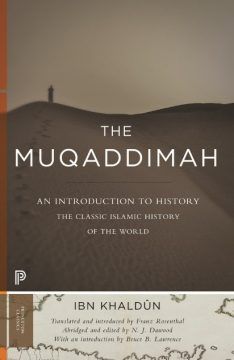 There is anecdotal evidence of sporadic interest in ancient artifacts and ruins going as far back as ancient Egypt and Mesopotamia, but no systematic science of archaeology is apparent until the mid-18th century. Rulers did pay attention to the monuments of their predecessors – even those from long ago – with a view to emulating or outdoing them, but not with any desire for knowledge. Clearly, the civilizations of regions from India to Egypt did value knowledge: They made great contributions in astronomy, mathematics, chemistry, medicine, geography, and other disciplines. They did systematic studies of language, culture, recent history, and even the very processes of history. But, for some reason, the artifacts of the past did not interest them in the same way. Prof. Ahmad Al-Jallad – a leading scholar of ancient Arabian epigraphy – has pointed out that the deserts and mountains of Jordan and the Arabian Peninsula are littered with thousands of rock inscriptions in many ancient scripts, including the earliest writings in Arabic dating from the pre-Islamic and early-Islamic period. These were well-known to at least some scholars more than a thousand years ago, but – as discussed in a fascinating interview with Prof. Al-Jallad – they looked at these inscriptions as a source of folklore rather than history. There was apparently no attempt to decipher unknown scripts or to elicit historical information from the scripts that could be read. As a result, much that could have been preserved was lost. There are a few interesting exceptions, such as the Egyptian polymath ‘Abd al-Latif al-Baghdadi who, in the 13th century, made observations of the pyramids and lamented their state. But such exceptions merely prove the rule.
There is anecdotal evidence of sporadic interest in ancient artifacts and ruins going as far back as ancient Egypt and Mesopotamia, but no systematic science of archaeology is apparent until the mid-18th century. Rulers did pay attention to the monuments of their predecessors – even those from long ago – with a view to emulating or outdoing them, but not with any desire for knowledge. Clearly, the civilizations of regions from India to Egypt did value knowledge: They made great contributions in astronomy, mathematics, chemistry, medicine, geography, and other disciplines. They did systematic studies of language, culture, recent history, and even the very processes of history. But, for some reason, the artifacts of the past did not interest them in the same way. Prof. Ahmad Al-Jallad – a leading scholar of ancient Arabian epigraphy – has pointed out that the deserts and mountains of Jordan and the Arabian Peninsula are littered with thousands of rock inscriptions in many ancient scripts, including the earliest writings in Arabic dating from the pre-Islamic and early-Islamic period. These were well-known to at least some scholars more than a thousand years ago, but – as discussed in a fascinating interview with Prof. Al-Jallad – they looked at these inscriptions as a source of folklore rather than history. There was apparently no attempt to decipher unknown scripts or to elicit historical information from the scripts that could be read. As a result, much that could have been preserved was lost. There are a few interesting exceptions, such as the Egyptian polymath ‘Abd al-Latif al-Baghdadi who, in the 13th century, made observations of the pyramids and lamented their state. But such exceptions merely prove the rule.
The question is: Why? What was it in a diverse range of cultures that they remained content in their ignorance when history lay all around them? Was it disinterest in the past – an attitude that knowing more beyond what scripture and tradition said would be a waste of time, or that there was nothing to learn from vanished alien cultures except sic transit gloria mundi? Or was it something deeper – a different relationship with the world, and especially with time? Perhaps for some, it was a view of history as the work of God rather that the business of Man; for others, an inability to distinguish between history and legend. One may also speculate that the emergence of archaeology as a science required a transition from an eschatological view of history to a secular, material, and humanistic one – a view that was made possible by the same changes that made European colonialism possible, and that underlie the qualitative change in material progress since the Renaissance.
Whatever it was, something awoke in 16th century Europe that ignited a passionate interest in digging up and studying the past. Initially, it was an interest in “antiquities” unearthed all over Europe. Soon, pioneers like John Aubrey extended this to a larger scale study of megalithic sites such as Stonehenge and Avebury. The earliest European colonizers – the Spanish, Portuguese, and Dutch – showed little interest in history even as they marauded their way through lands rich in lost civilizations. It was with the arrival of Napoleon in Egypt that this changed, and the great age of European archaeology began. In the 150 years between Napoleon’s invasion of Egypt and the British departure from India and the Middle East, the great monuments of Egypt had been revealed In full; storied ancient cities like Babylon, Nineveh and Ur had been excavated; the Indus Valley Civilization had been discovered; Egyptian hieroglyphics and several cuneiform scripts had been deciphered and their languages understood; the initial family tree of the Indo-European languages had been drafted; and the understanding of history had been revolutionized utterly. What had been neglected for thousands of years was laid bare in little more than a century.
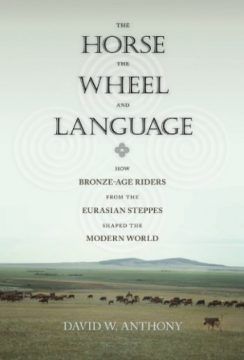 It is obvious that the scientific, rational revolution that swept Europe after the Renaissance transformed human understanding of the universe and Man’s place in it. One of the most profound transformations in this regard was a re-organization of time – ultimately at three levels: Human, geological, and cosmic. Before that, it was quite typical for an educated European to believe that the Universe, including the Earth, was created a few thousand years ago by an act of God and then populated with beasts and men. Other civilizations too had origin stories involving cosmic battles, apocalypses, successive ages, circular time, etc. Human time in these stories was dynamic – i.e., sequentially ordered – only to a limited extent in the past. After that, it effectively became static by being absorbed into an eternal void, an age of gods, or indeterminate circularity. There was little notion of a long human history, let alone a much longer prehistory. Distant times, like distant lands, were populated by fantasies akin to “here be dragons.” What changed this was, first, the discovery by Christian Thomsen and others that, based on artifacts dug up from the ground, human history could be organized reliably into a succession of ages stretching back into a remote past. And then, as mentioned earlier, came Darwin’s theory of evolution that not only stretched the age of the Earth by orders of magnitude but also linked humanity into the extremely ancient chain of life. These two seminal transformations were followed by advances in geology, the discovery of plate tectonics and continental drift, the development of carbon dating, the observation of the expanding universe, and the calculation of the age of the Earth (about 4.5 billion years) and that of the Universe (about 13.8 billion years). And here we are today, living with at least an abstract apprehension of billions of years in cosmic and geological time, and hundreds of thousands of years in human time. And, thanks to advances in linguistics, science and engineering, knowledge of this past is increasingly accessible to us in concrete form. Systematic archaeology makes much more sense in this framework – just as paleontology, geology, and cosmology do. It is interesting to note also that the Europeans’ initial excitement about ancient Egyptian, Near Eastern, and Mesopotamian history was driven in large part by the possibility of validating Biblical stories. In one of history’s great ironies, even as the archaeology confirmed the reality of various Biblical places and persons, it subverted the literal versions of their stories and led directly to a more secular conception of the world.
It is obvious that the scientific, rational revolution that swept Europe after the Renaissance transformed human understanding of the universe and Man’s place in it. One of the most profound transformations in this regard was a re-organization of time – ultimately at three levels: Human, geological, and cosmic. Before that, it was quite typical for an educated European to believe that the Universe, including the Earth, was created a few thousand years ago by an act of God and then populated with beasts and men. Other civilizations too had origin stories involving cosmic battles, apocalypses, successive ages, circular time, etc. Human time in these stories was dynamic – i.e., sequentially ordered – only to a limited extent in the past. After that, it effectively became static by being absorbed into an eternal void, an age of gods, or indeterminate circularity. There was little notion of a long human history, let alone a much longer prehistory. Distant times, like distant lands, were populated by fantasies akin to “here be dragons.” What changed this was, first, the discovery by Christian Thomsen and others that, based on artifacts dug up from the ground, human history could be organized reliably into a succession of ages stretching back into a remote past. And then, as mentioned earlier, came Darwin’s theory of evolution that not only stretched the age of the Earth by orders of magnitude but also linked humanity into the extremely ancient chain of life. These two seminal transformations were followed by advances in geology, the discovery of plate tectonics and continental drift, the development of carbon dating, the observation of the expanding universe, and the calculation of the age of the Earth (about 4.5 billion years) and that of the Universe (about 13.8 billion years). And here we are today, living with at least an abstract apprehension of billions of years in cosmic and geological time, and hundreds of thousands of years in human time. And, thanks to advances in linguistics, science and engineering, knowledge of this past is increasingly accessible to us in concrete form. Systematic archaeology makes much more sense in this framework – just as paleontology, geology, and cosmology do. It is interesting to note also that the Europeans’ initial excitement about ancient Egyptian, Near Eastern, and Mesopotamian history was driven in large part by the possibility of validating Biblical stories. In one of history’s great ironies, even as the archaeology confirmed the reality of various Biblical places and persons, it subverted the literal versions of their stories and led directly to a more secular conception of the world.
In thinking of how people in earlier times related to history, it is interesting to separate living history from the dead past. Of course, people have always had a sense of the history they feel embedded in, often going back centuries and even crossing civilizational boundaries. The accuracy of this remembered living history often drops off rapidly with age, but it remains real to those invested in it. Thus, the Romans still felt connected with the history of Ancient Greece, the Sassanians still harked back to the Achaemenids, and many Muslims today think of themselves as part of a history rooted in 7th-century Arabia. The case is very different for the past that is seen as dead or alien – as the history of bygone people. Until relatively recent times, such history was regarded mainly as the stuff of mythology, legend, folklore, or faith. At a more concrete level, the constructions of such vanished cultures were seen more as a source of building materials than things worthy of preservation and study. The tragic story of how the polished outer casing of the great pyramids was quarried for building material by the Mamlukes is well known, but is far from the only example. Even today, in many regions of the world that are rich in ancient history, local interest in it remains low outside a small elite – unless the site has potential as a tourist attraction. Why this is still the case in our “enlightened” age is a mystery, and somewhere in the answer to this mystery lies a deeper understanding of the world we live in today.
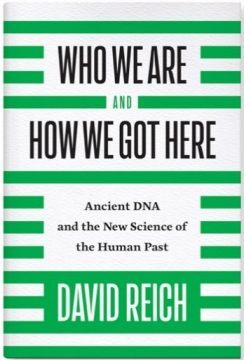 The journey that began with Henry Rawlinson and other pioneering archaeologists has truly transformed our vision of history. Now, as innovations such as the study of ancient DNA are igniting a new revolution in humanity’s understanding of itself, it seems apt to close this rumination on archaeology with an observation from Austen Layard, quoted in Adkins’ book (p. 238):
The journey that began with Henry Rawlinson and other pioneering archaeologists has truly transformed our vision of history. Now, as innovations such as the study of ancient DNA are igniting a new revolution in humanity’s understanding of itself, it seems apt to close this rumination on archaeology with an observation from Austen Layard, quoted in Adkins’ book (p. 238):
‘A stranger laying open monuments buried for more than twenty centuries, and thus proving to those who dwelt around them, that much of the civilization and knowledge of which we now boast, existed among their forefathers when our “ancestors were yet unborn,” was, in a manner, an acknowledgment of the debt which the West owes to the East.’
From deep in the heart of an exploitative age, this was a small but significant acknowledgement of the interconnectedness of all human societies across place and time. That has been the most important gift of archaeology to the world.
